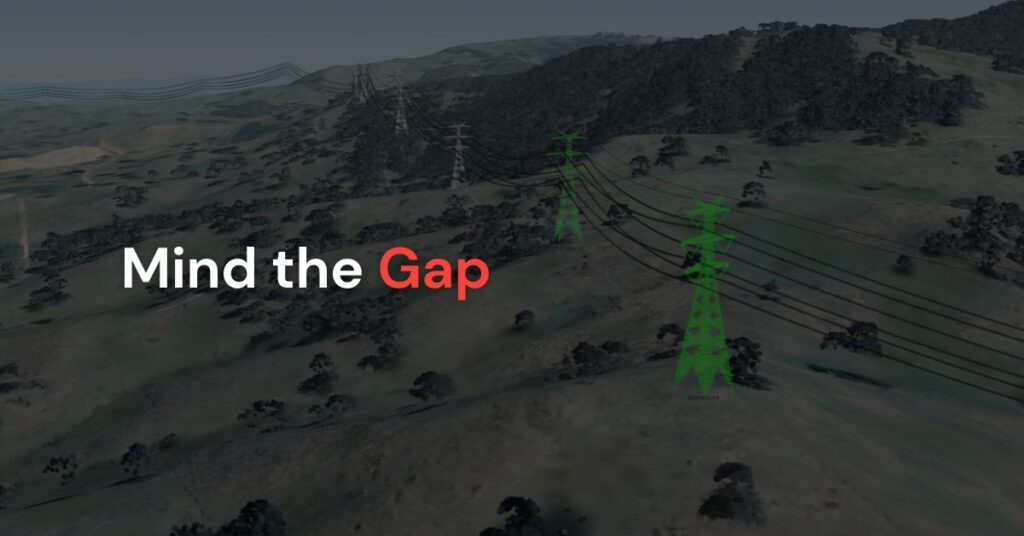The Risk-Readiness Gap: What’s holding utilities back from risk-based resilience?
With more data, tools, and visibility, utilities are closer than ever to making risk-informed decisions at network scale. But there’s still a disconnect between what utilities could achieve with their data and what current systems support.
At Neara’s Mid-Atlantic Resiliency and Reliability Forum, co-hosted with Dominion Energy, we posed a fundamental question to utility leaders: “What data do you need to make and justify prioritization decisions?”
We heard from executives across transmission, distribution, resilience, reliability, and advisory functions, and the responses were clear — utilities don’t lack data, they lack a reliable way to act on it to make defensible, risk-informed decisions. We call this the risk-readiness gap.

What is the risk-readiness gap?
It’s the difference between what utilities are expected to deliver—a resilient, reliable grid that withstands extreme weather and aging infrastructure—and what their current planning tools and models enable them to actually deliver.
This gap isn’t caused by a lack of effort or expertise. It’s a structural issue rooted in disconnected data systems, reactive and manual workflows, limited risk quantification, and the growing need to justify every dollar with defensible analysis.
The result? Utilities are left managing escalating risk with tools that weren’t designed to anticipate or explain it. And while progress is being made, the forum made one thing clear: most utilities are still stuck in a reactive planning posture, driven by inspection cycles, regulatory timelines, or incident response—a mode that makes resiliency planning and narrowing the risk-readiness gap harder to achieve.
So how do utility leaders close this gap—not just with better tools, but with better frameworks for decision-making?
What emerged from our conversations is that utilities are balancing three complementary approaches to meet today’s reliability and resilience demands:
- 1. Compliance-Driven Reliability: Meeting Minimum Regulatory Standards
This approach ensures utilities meet the thresholds required by regulators or industry standards, such as outage duration targets, inspection cycles, and restoration timelines. It focuses on maintaining accountability and consistency but tends to reinforce the status quo rather than proactively addressing emerging risks.
Utilities told us that while compliance is non-negotiable, it often dictates what gets done, not necessarily what should be done first.
- 2. Risk-Based Resilience: Optimizing for Critical Threats and Vulnerabilities
This approach directs investment where it matters most. By using data to understand which assets pose the highest likelihood and consequence of failure, utilities can prioritize risks and force-rank interventions based on the most significant impact. It promotes smarter, risk-weighted decision-making but depends on robust data integration and structurally accurate, scenario-driven modeling to be effective.
- 3. Customer-Centric Continuity: Building for Trust, Safety, and Affordability
This perspective extends beyond compliance and asset risk. It’s not just about which assets are most vulnerable—it’s about how reliability and resilience directly affect people, especially critical facilities, vulnerable populations, and high-priority customers. This approach emphasizes equity, transparency, and affordability, helping utilities strengthen public trust while making sure resilience investments support both infrastructure and the people who rely on it.
Rather than treating these approaches to resilience as separate objectives, utilities need to view them through a single lens for risk-informed decision-making. Compliance tells you what’s required, risk modeling shows you what’s most vulnerable, and customer impact reminds you what’s at stake. Each framework serves a purpose, but only together do they provide you with the full context of your network risk for proactive resiliency planning.
Resilience isn’t a single strategy—it’s a system-wide shift
Closing the risk-readiness gap isn’t about adding more. It’s about building the connective tissue between the data and systems utilities already have and the insights they need to make defensible, risk-informed decisions at scale.
That means shifting from siloed, compliance-led workflows to an integrated, scenario-driven decision framework that connects reliability, resilience, and continuity into a single view.
Ultimately, it’s about redefining the way that utilities plan, invest, and adapt. The outcome is a smarter, more connected grid capable of learning, anticipating, and evolving faster than the challenges it faces.
Want to learn more? Read our full primer on Digital Risk Mitigation.